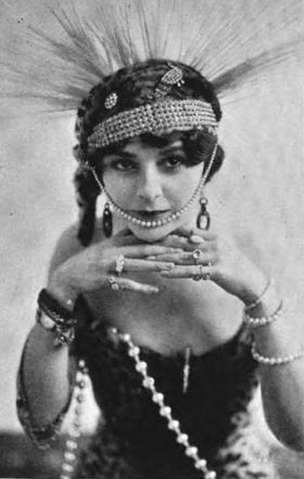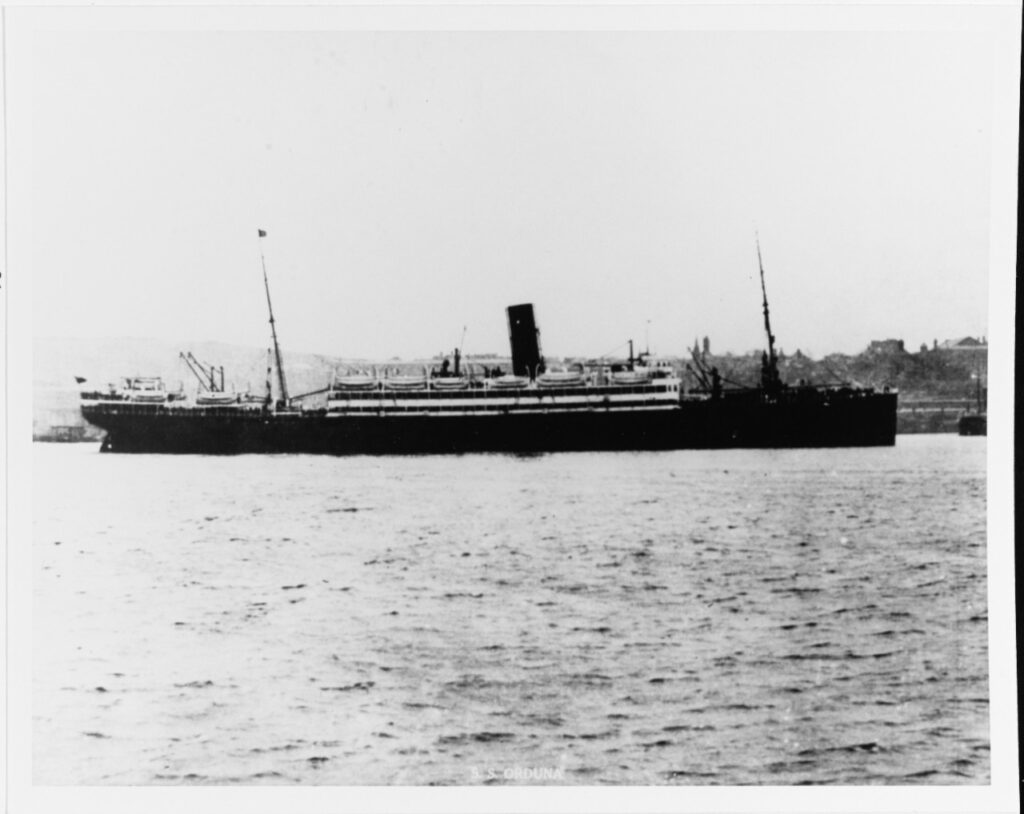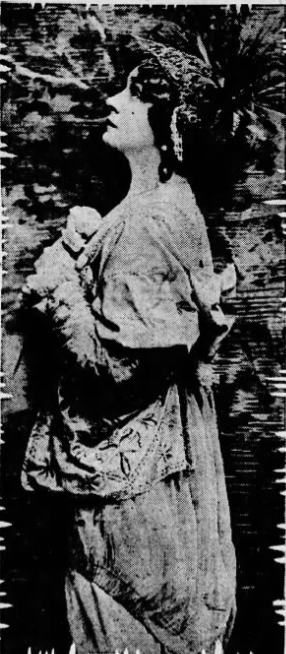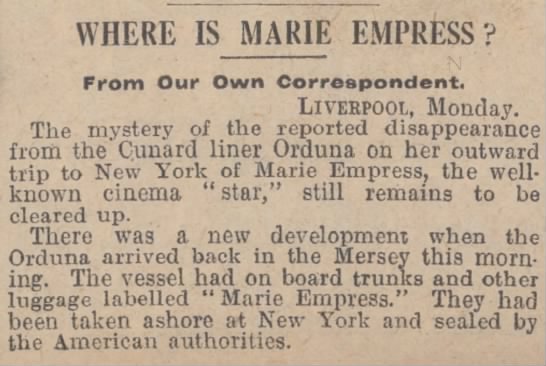“What Drew Her Into Oblivion?”: The Disappearance of Silent Film Actress Marie Empress

Mary Ann Louisa Taylor, known by her stage name Marie Empress, was born on 26 March 1884 in Birmingham, England. Marie had a busy career as an actress, singer, dancer, and successful male impersonator, and garnered a reputation as a comedienne in Britain. She specialised in playing femme fatale, or vamp characters which led to confusion about her real persona in the press. Marie was a confusing public figure with accusations of suspected drug use as well as unexplained scars on her face, hidden convincingly with stage makeup. Little is known about her life outside of her work in film and theatre, but her name and face were recognisable amongst the British public and, had things worked out differently, she likely would have enjoyed continued success and popularity as an actress. However, fate had other plans for Marie Empress when on a chilly October night in 1919 she disappeared without a trace on a voyage across the Atlantic.
Journey to America on the SS Orduña
In October 1919, 35-year-old Marie travelled alone on the SS Orduña for an eleven day journey from Liverpool to New York City with a single stop in Halifax, Nova Scotia. Marie was one of over a thousand passengers and crew on board; a mixed bag of high profile celebrities, immigrants, and ordinary folk travelling between the two continents. She stayed in a first class cabin, Stateroom No. 480, located on the Orduña’s B deck. It’s been noted that her room had a single locked 14 inche porthole with no outside gallery – a detail that will be important later.

During her stay, the only person Marie actively spoke with was her stewardess whom she had met for the first time upon boarding. The Philadelphia Inquirer spoke with the woman in November 1919 and asked about her time spent with Marie during the journey to America. The woman, referred to only as ‘the stewardess’, spoke positively of Marie. She had originally thought the actress was a war widow since she was dressed in black with a large black veil. When she asked if Marie was a Miss or Mrs, Marie replied that she “never married, but [she] may soon.” An odd statement since she had previously been married to dentist William Horton in 1902 before separating in 1906 and divorcing in 1918. Marie told the stewardess that she wasn’t sure where she would stay once they arrived in New York as she didn’t have any friends in the area. Previously, Marie had had a negative experience on stage in New York when she was booed for being too romantically affectionate with her pianist. Was this her way of expressing doubt to the stewardess about her plans of returning to the city? The stewardess reassured her that there were plenty of hotels as well as taxis willing to take her wherever she needed to go, so she would be well looked after. Reflecting on her time with Marie, the stewardess told the Philadelphia Inquirer:
She seemed cheerful enough. She would make little jokes while I sewed the rips in her clothes. We had several laughs together about things I’ve forgotten. She seemed just like any other lady who was making the crossing, except that she was better looking and better humoured.
Marie Empress’ Stewardess in The Philadelphia Inquirer (16 November 1919)
The stewardess also mentioned the scar on Marie’s face that ran along the side of her nose. She said Marie told her the scar was from a car accident and that she was planning on visiting a hospital while in New York to have it treated. The actress had a general air of mystery around her and the exact purpose of her journey wasn’t entirely clear. Was she travelling for work? Or perhaps for love, like she had hinted to the stewardess when she asked Marie about marriage? Unfortunately, Marie would leave behind even more questions when she vanished without a trace shortly after the Orduña departed from Halifax.
The night of her disappearance, the stewardess entered Stateroom No. 480 at 6:30PM to clear Marie’s plates from dinner. Marie instructed her to bring some sandwiches to her room three hours later for 9:30PM. When the stewardess returned with the sandwiches at the agreed time she knocked and received no answer. Letting herself in, the stewardess found Marie’s cabin empty so she left the sandwiches for Marie to eat when she returned from, what she assumed was, another part of the ship. Little did the stewardess know she would be the last person to see the actress alive.
What Happened to Marie Empress?
How did Marie Empress, the famous tragedian Edmund Kean’s Great Grandniece, vanish — unheard and unseen — from the thronged liner “Orduna”? What drew her into oblivion from its brilliantly lighted decks into the cold, black waves?
‘Mystery of Stateroom No. 480’ from The Philadelphia Inquirer (16 November 1919)

On the morning of 27 October the stewardess knocked on Marie’s door and was met, once again, with silence. She entered her cabin and was shocked to find the sandwiches from the night before uneaten and the bed unslept in. In fact, the entirety of Stateroom No. 480 was exactly as it had been the night before. A search was conducted to find the missing actress but no trace of her was found on the Orduña. But where could she have gone? The previously mentioned porthole in her room was allegedly too small for her to have squeezed through. And in order for her to have gone on deck, Marie would have had to pass through several salons and passageways that were typically busy at the time of night. Surely someone would have seen Marie, a popular and easily recognisable actress, pass them by.
The cause of death for Marie Empress was assumed to be suicide. However, a number of arguments contradict this, including the deck being well lit and populated by stewards and officers in the evenings and night. Would someone not have seen Marie walking alone on deck before throwing herself over the rails into the sea? In a world long before surveillance cameras, it’s impossible to say. The sheer number of people on board, along with Marie’ celebrity status, makes her alleged suicide difficult to comprehend. If she really did kill herself, Marie was either ‘lucky’ to leave the ship unseen, or someone saw and chose to keep it to themselves.
Another theory was that the actress used her ‘disappearance’ as a publicity stunt. Marie was a talented male impersonator, so what was stopping her from sneaking off the ship dressed as someone entirely unlike herself? However, this theory is unlikely for two reasons — Marie’s belongings, according to her stewardess, were untouched the morning she was reported missing, and Marie’s grand re-entrance into the public eye never happened. In fact, no one ever reported seeing her again.
On 2 December 1919, over a month following her disappearance, the London newspaper the Daily Mirror wrote a brief two paragraph article headlined with the simple but puzzling question ‘Where is Marie Empress?‘. The truth was that no one knew, or at least no one was coming forward with any information. It was clear at that point Marie was either dead or didn’t want to be found, though the former seems more likely. The Daily Mirror also reported a new development in the story — Marie’s trunks with her personal belongings had been taken by American authorities in New York after they remained unclaimed. If Marie had been alive, it’s assumed she would have gone to the police to reclaim her belongings, but she never did.
Marie’s exit from this world, which seems to point to suicide, left many questions about the young actress’s personal life. Was she struggling to live in the spotlight with an undiagnosed and crippling mental illness? Did something happen that made her feel that life was no longer worth living? Did she board the Orduña knowing she’d never actually make it to America?
Evidence found in Stateroom No. 480 says that Marie actually did intend to arrive in New York when she departed from Liverpool. In her luggage Marie had a series of photographs of herself ready to be given to the press in New York. And once she had reached Halifax, Marie had sent a cable to a hotel she had formally stayed at in New York saying “Arrive Monday. Please have room for me.” So it seems that even when the Orduña left Halifax, Marie was planning on arriving in New York. Or was she simply covering the trail to her inevitable suicide? Did her prior humiliation of being booed on stage in New York suddenly fill her with deep regret for returning to America? Or was this proof that something nefarious occured with another passenger onboard? If Marie’s death was a suicide, the actress’s inner demons were well contained making speculation on why she did such a thing almost impossible to determine. If it was murder, there’s absolutely no leads or theories of who could have killed Marie, a known actress, and disposed of her body without being seen on a busy ship. There were no sign of struggle, no screams, nothing that pointed to her alleged death being at the hands of another Orduña passenger. It’s unfortunately a mystery that appears unsolvable, especially over a century after Marie’s disappearance.
I like to think that Marie somehow did sneak off the Orduña, alive and well, but not for the sake of a publicity stunt. Perhaps she found love, was re-married, and lived out the rest of her life peacefully in America, away from whatever might have been troubling her. A sugar-coated, unlikely version of what happened, but much less depressing than what probably occured the night of 26 October 1919. The answer to the question ‘where is Marie Empress?’ will probably always be ‘… no one knows’. Though its likely her short but spellbinding life ended alone and far from home in the dark waters of the Atlantic.

Sources and Additional Reading
History – The Silent Film Star Who Vanished Without a Trace
The Philadelphia Inquirer, “Mystery of Stateroom No. 480”, 16 November 1919.
Wikipedia – Marie Empress
